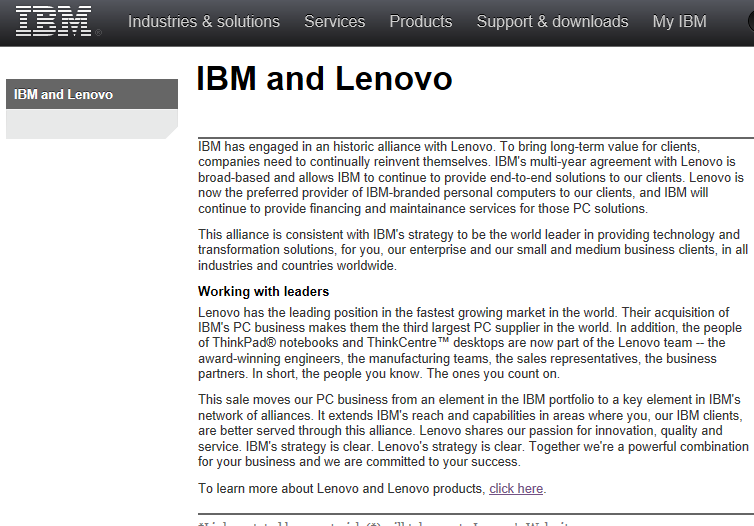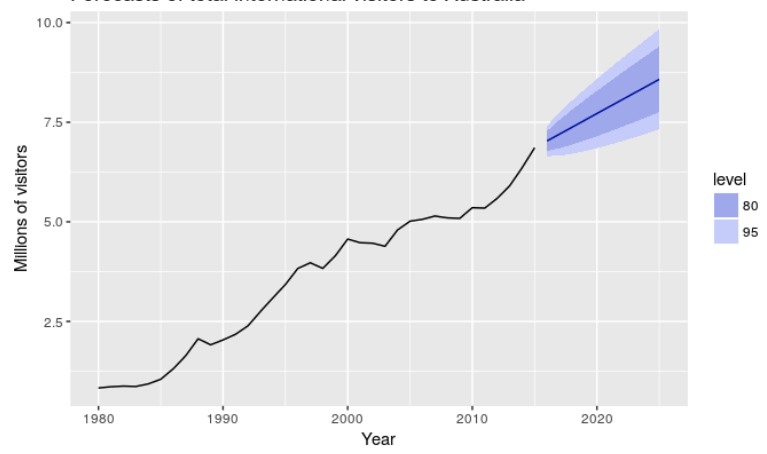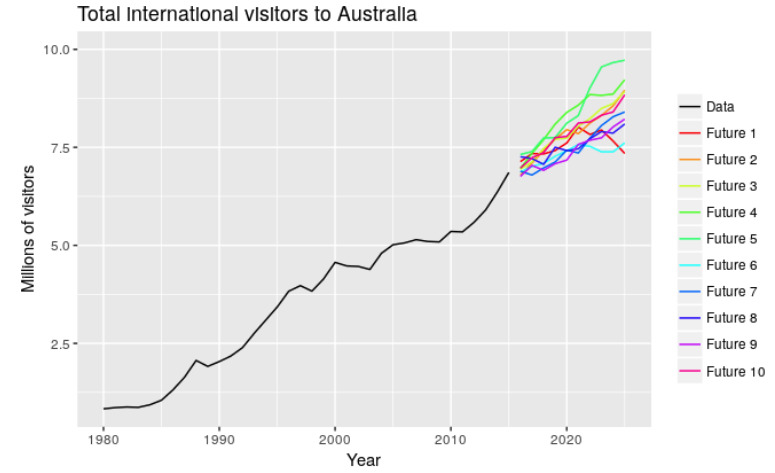This article considers the nature of modern supply chain models and the variables included to manage risk from a quantitative basis. Correspondingly, a particular emphasis on the importance of forecasting and supply chain infrastructure for large business performance will be briefly analysed with stipulation on IBM > Lianxiang, collective agriculture and an identification of different methods of supply chain financing.
Supply Chain Modeling
Supply Chain modeling is highly complex in nature and little understood by many clients, consumers and subordinate-level employees. There is a shortage of younger professionals and aging talent gaps in the industry (Datex 2015). Although the supply chain is revolutionizing with innovation and agility, it is still considered to be something niche and a relatively non-fundamental component for most businesses. This injurious ideology is reflected upon when analysing corporate investment flow into supply chain sectors such as data interchanges [EDI], supply chain infrastructure, data warehouses, asset tracking and logistics which are diminutively financed relative to other business functions.
Although the majority of firms now have international consumer markets, there is still unclarity with regards to the reasoning behind why businesses are underperforming and vulnerable to competition. According to a paper published by the consultancy group KPMG in 2018, it was determined that the causation of the majority of underperformance in large businesses is typically situated within outdated supply chains that are poorly optimized and contain many inefficiencies and meager solutions, particularly concerning digital innovation, cost competitiveness and productivity with internal investment flows to manage risk becoming outsourced to marketing and consultation instead.
Fig 1.1. The underestimation of supply chain focus is highly evident concerning the C- suite relative to supply chain executives.
Supply Chain infrastructure provides the means for chain economic entities and firms sharing a common interest to participate in a mutual exchange. K. Kogan, C.S Tapiero (2012) Subsequently, the efficient delivery of such exchanges can result in an increasingly dominant market position and provide positive sector disruption. Middle management to the C suite may understand the supply chain from a theoretical basis, however, they often endow little time into development and investment in supply chain entities as they are multifaceted and often difficult to justify + measure the financing.
<Fig. 1.2 Study undertaken by the auditing and consultancy group Gartner performed over three years to medium – large business professionals to determine where there business strategic priorities are. Although the Supply chain is interdependent with the majority of these strategies listed, there is still no direct mention of it as a sole strategy.

Lianxiang and Collective Agriculture Case Study
I.e. Lianxiang [Known for its subsidiary Lenovo] is a Chinese electronics company which had experienced struggles with managing excessive demand for their electronic unit lines; this led to their unit lines becoming vulnerable to external market forces because of other companies providing similar quality units for reduced prices readily available to the international market. This was seen as supply chain inefficiency for Lianxiang, which soon realized the most strategic way was to outsource its supply chain. Lianxiang co-invested with IBM, an internationally established leader, to manufacture their electronic units in exchange for Lenovo distributing the products through their various channels and profit sharing. IBM strategically categorized their production lines into business, family and student units. IBM also managed the reverse supply chain and handled all unit repairs for Lianxiang. This enabled Lianxiang to focus on development, logistical coordination and product innovation. IBM configured highly flexible supply chain infrastructure capable of accommodating the separate demand flows of the manufacturer’s two primary markets [distributors and end consumers].

Fig. 1.3 IBM’s statement to the general public on the enterprise alliance between Lenovo.
Supply Chain Financing
Supply Chain infrastructure can be financed through numerous methods. Lianxiang and IBM were transacted through merging and acquisition, however another effective financing strategy for supply chain infrastructure is through public- private partnerships. These are legal agreements between a public authoritative or regulatory body and a private party. These partnerships permit risk to be distributed between both stakeholders in exchange for the expertise and efficiencies of the private sector. Public to Private financed supply chains are highly effective for supply chains that are highly complex, prone to excessive risk [weather, terrorism etc…] and civilian reliant.
Agriculture Partnerships
The agricultural industry is an optimal example of the incorporation of supply chain infrastructure through co-investment financing between private and public sectors. Collective farming in countries with harsher climates such as Israel, Russia and China where there is not much arable land, is legally regulated to effectively allocate supply chain infrastructure strategies to maximise efficiency. This is performed through the provision of common logistic and capital equipment for the private sector to better utilize the agricultural land exploitation. Agricultural industries that use supply chain infrastructure with data interchanges and metrics are highly developed; and the agricultural industries for these countries boast the lowest levels of agricultural waste internationally. University of Jerusalem (2016).
Both these case studies are effective ways where the consolidation of supply chain infrastructure for mutual benefit can be profitable and efficient for both individual parties. It is also a protected system of distribution and decentralization of risk through financial consolidation and partnership. The financing of supply chain infrastructure is highly critical and institutions that specialize in supply chain finance are highly effective in providing specialized loans and consultancy services that can better determine the risk of the supply chain borrower defaulting and provide specialized rates and recommendations that permit their clients to maintain healthy balance sheets, good relationships with suppliers and consumers, and assistance in providing liquidity and reduction of financial costs. Trade Finance Global (2018).
Stochastic Modeling


Fig 1.4. Ten possible future values modeled individually. Plotting individual future values as per above should be effectively visualized and not plotted. After obtaining a 10 possible future value index, it is best to value the forecast at the middle of the range.
Fig 1.5. Highlighted forecast point and identification of the expected parameters.
For a firm to have effective modeling, there are parameters and risk tolerances that need to be identified and set. Although there will never be a perfect forecast, a business should always provide a prediction interval, which is a range of values a random variable could acquire with relatively high probability. I.e. A 95% prediction interval contains a range of values which should include the future value with probability 95%. Inherently, we are estimating the middle of the range of potential values a random variable could acquire.
Both graphs above are a model of the simplest way to effectively forecast data however in real

life cases there are excessive variables and there could be up to a thousand different potential future values.
Fig 1.5. Are time series datasets that are quite difficult to forecast – this is where analysts focus on three major indicators: trend, seasonality and cyclicality. The forecasting should then derive from the middle management within the business from different departments and geographic locations with their own interpretations and justifications of the future value[s]. This will permit decision making to be made with strong risk management.
Statistical formulas incorporate mathematics to quantitatively determine and build complex models which are increasingly important to large businesses that transact, move and coordinate hundreds of thousands of units internationally. This is known as supply chain optimization; ideally it is important to understand that the definition of risk is what’s known during events of uncertainty, using forecasting as the most effective method in providing for all possible contingencies. Modeling is fundamental to decision making as medium to large businesses are constantly moving their units in mass amounts at different parts of the world all at once. Risks in transport, terrorism, currency, government restrictions, loss of transparency, supply chain fraud, defaults and inefficiencies are all potential external risks that need to be justified and influenced when large – medium business make decisions.
The most successful companies that have been around for a long time, are well known for having effective supply chain models, Amazon, Coca Cola, Boeing, McDonalds, Apple, Wal-Mart etc… these companies have been insightfully described by M. Fawkes, the former supply chain executive for Hewlett Packard, “These large companies have built a closed ecosystem where they can exert control and coordination on every movement within their supply chains, from design to end retail stores, they have each taken their operational excellence to a level never seen before in the corporate world”.
Non-cooperative behavior between stakeholders, c-suite leaders, and other parties reduces the efficiency of supply chains. Ideally, it is important that business find the most feasible supply chain infrastructure that maximizes profit in aggregate whilst decentralizing risk. It is imperative that consensus meetings are coordinated with forecasts submitted by each department on a regular basis alongside quarterly meetings to involve all parties throughout the decision making process. Reductions in Silo data should be highly prioritized by the C-suite to have more transparent forecasting models.
Furthermore the supply chain will become a staple business function as more firms merge into industry 4.0 with more businesses acquiring innovations such as block chain and predictive analytics about their markets. It will be an interesting time for many industries.























